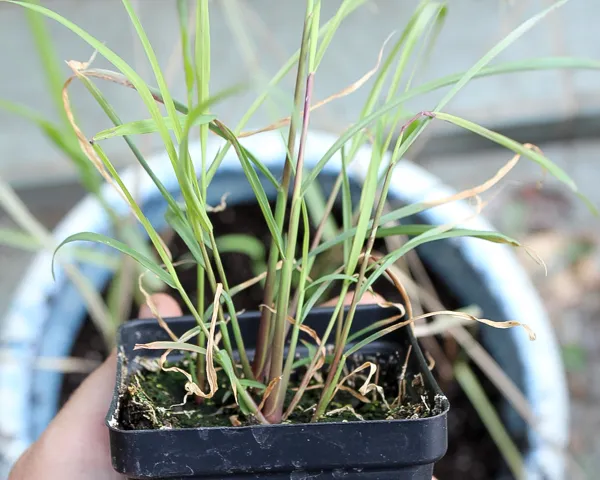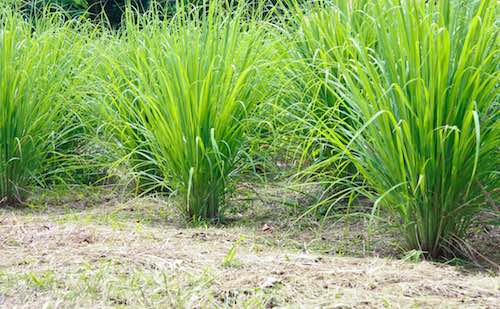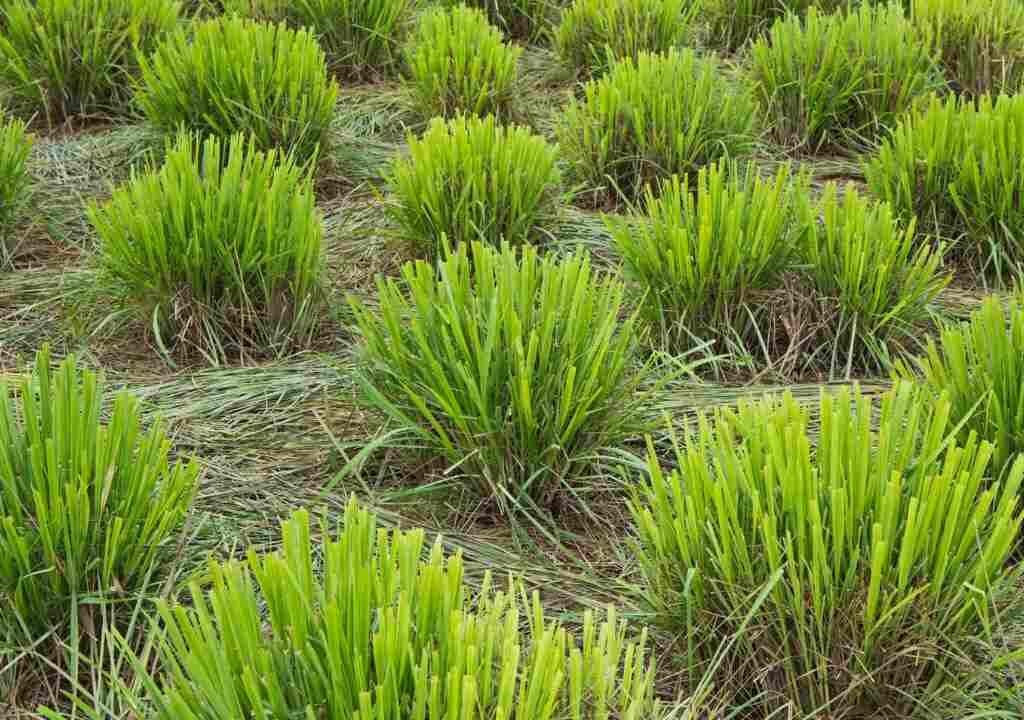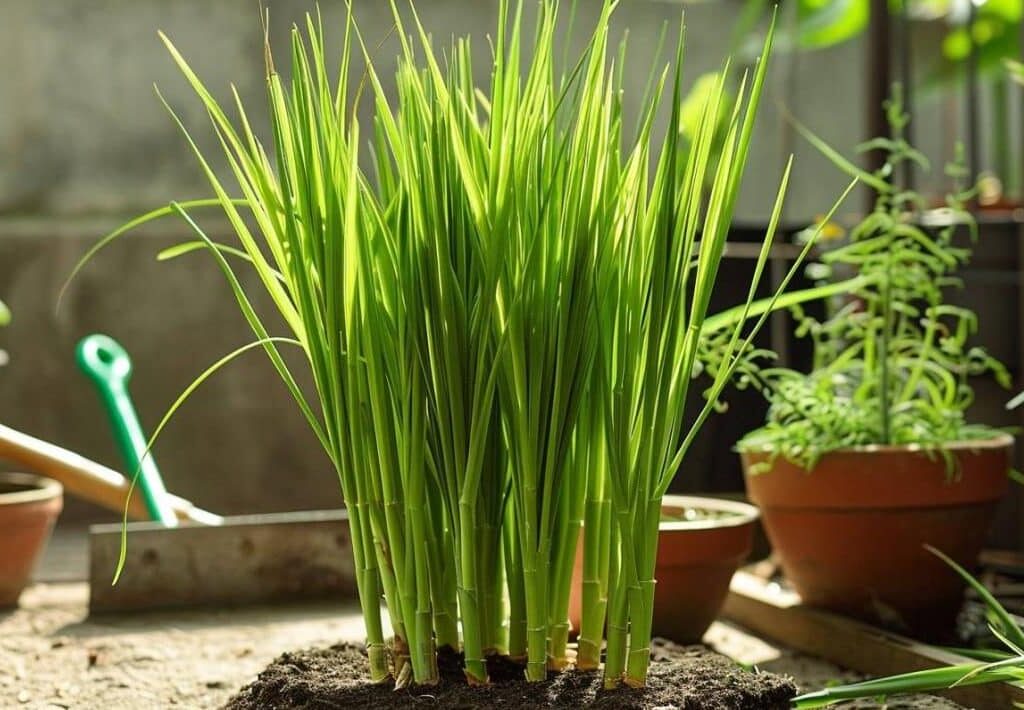If you’ve ever enjoyed a refreshing cup of herbal tea or a fragrant Thai curry, chances are you’ve tasted the bright, citrusy flavor of lemongrass. This versatile, aromatic herb isn’t just for the kitchen — it’s also a beautiful, easy-to-grow plant that can thrive in your home garden, balcony, or even a sunny windowsill. Whether you’re a seasoned gardener or a total beginner, growing lemongrass is one of the simplest, most rewarding gardening projects you can start.
In this detailed guide, we’ll walk you through how to start growing lemongrass from store-bought stalks or seeds, how to care for it, and how to harvest it for cooking, tea, or natural insect repellent. Let’s dive in!

Why Grow Lemongrass?
Lemongrass (Cymbopogon citratus) is a tropical perennial grass native to Southeast Asia. It’s prized for its strong lemon aroma, culinary versatility, and medicinal benefits. Here’s why it deserves a spot in your garden:
- Easy to grow and maintain
- Beautiful ornamental grass with graceful, arching leaves
- Natural mosquito and insect repellent
- Delicious in teas, soups, stir-fries, and marinades
- Can be grown in pots, containers, or garden beds
- Rich in antioxidants and anti-inflammatory compounds

When Is the Best Time to Plant Lemongrass?
Lemongrass loves warm, sunny weather and should be planted after the last frost when temperatures consistently stay above 50°F (10°C). In colder climates, it can be grown indoors or in containers to be moved inside during winter.
Best planting times:
- Spring (March to May) for most temperate regions
- Year-round in tropical and subtropical areas

What You’ll Need
Before you start growing lemongrass, gather these supplies:
From Stalks:
- Fresh lemongrass stalks (from a grocery store or Asian market)
- A glass or jar
- Fresh water
- A pot with drainage holes (if container-growing)
- Good-quality potting mix or garden soil
From Seeds:
- Lemongrass seeds
- Seed-starting tray or small pots
- Seed-starting mix
- Spray bottle for watering

How to Grow Lemongrass from Stalks (Easiest Method)
Growing lemongrass from fresh stalks is the easiest and most popular method. Here’s how:
1. Select Healthy Stalks
Look for fresh lemongrass stalks with firm, green bases and some visible roots if possible. Avoid dried-out, yellowing, or mushy stalks.
2. Soak the Stalks in Water
Place the stalks in a glass or jar filled with enough water to cover the bottom 2–3 inches. Set the jar in a sunny spot like a windowsill.
Change the water every 2–3 days to keep it fresh and prevent rot.
3. Wait for Roots to Grow
Within 1–2 weeks, you’ll notice small white roots sprouting from the base of the stalks, along with new green shoots emerging from the tops. Once the roots are about 2 inches long, they’re ready for planting.
4. Plant in Soil
Fill a pot or garden bed with well-draining soil. Plant the rooted stalks about 2 inches deep and 12 inches apart to give them room to grow.
For containers: Use a large pot (at least 12 inches wide and deep) to accommodate the lemongrass’s spreading habit.
5. Water and Position
Water the soil thoroughly after planting and keep it consistently moist — but not soggy. Lemongrass loves full sun, so place your plant in a bright, sunny location receiving at least 6–8 hours of direct sunlight per day.
How to Grow Lemongrass from Seeds
Although less common, growing lemongrass from seeds is possible and rewarding. Here’s how:
1. Sow the Seeds
Fill a seed tray or small pots with a lightweight seed-starting mix. Sprinkle lemongrass seeds evenly over the surface and lightly cover with a thin layer of soil.
2. Water Gently
Mist the soil surface with a spray bottle to moisten it evenly. Avoid overwatering.
3. Provide Warmth and Light
Place the seed tray in a warm spot (around 70°F/21°C) with indirect light. Covering the tray with plastic wrap or a humidity dome can speed up germination.
4. Transplant Seedlings
Seeds typically germinate in 10–21 days. When seedlings are about 3 inches tall, transplant them into larger pots or your garden.

Lemongrass Care Guide
Once your lemongrass is planted, it requires minimal maintenance. Follow these tips to keep your plants healthy and thriving:
Soil Requirements:
- Well-draining, loamy soil
- pH level: 5.5 to 7.5
- Enrich soil with compost or organic matter for best growth
Light:
- Full sun (6–8 hours daily)
- Indoors: Place near a south-facing window or under grow lights
Watering:
- Keep soil consistently moist, not waterlogged
- Water deeply once or twice a week, more often in hot weather
Fertilizing:
- Feed with a balanced, all-purpose fertilizer every 4–6 weeks during the growing season
- Organic compost or liquid seaweed fertilizer works well too
Pruning:
- Remove dead or yellowing leaves regularly
- Cut back plants in late fall to about 6 inches tall to encourage fresh growth

How to Harvest Lemongrass
You can start harvesting lemongrass once the stalks are about 1/2 inch thick and at least 12 inches tall.
To harvest:
- Use a sharp knife to cut stalks at ground level
- Choose outer stalks first, leaving inner ones to continue growing
- Strip away tough outer leaves before using the tender white base in cooking or tea
Overwintering Lemongrass
Lemongrass is a tropical plant and won’t survive frost. In cold climates (zones 8 and lower), either:
- Dig up the clumps in late fall and pot them for indoor growth
- Cut the plant back to 6 inches and move the pot indoors to a bright, warm spot
Water sparingly during winter dormancy, then return it outdoors after the last frost in spring.
Common Pests and Problems
While lemongrass is generally pest-resistant, watch out for:
- Aphids
- Spider mites
- Fungal root rot (if overwatered or poorly drained)
Solutions:
- Spray with insecticidal soap for pests
- Ensure proper drainage and avoid overwatering to prevent rot
Health Benefits of Lemongrass
In addition to its culinary uses, lemongrass offers impressive health perks:
- Aids digestion and relieves bloating
- Rich in antioxidants
- Natural anti-inflammatory and antimicrobial properties
- Relaxes muscles and promotes restful sleep (when used as a tea)
- Helps repel mosquitoes and insects naturally
Final Thoughts
Growing lemongrass is one of the easiest, most rewarding ways to add beauty, flavor, and functionality to your home garden. Whether you grow it from stalks or seeds, this hardy, fragrant herb requires minimal effort and thrives with plenty of sun and consistent watering.
From brightening your cooking to creating soothing teas and naturally keeping bugs at bay, lemongrass is a must-have addition to any garden.





